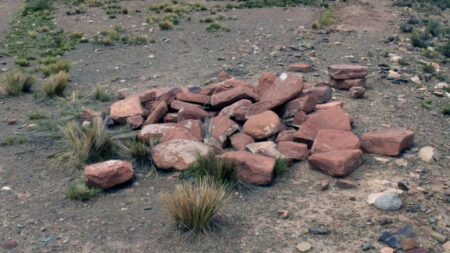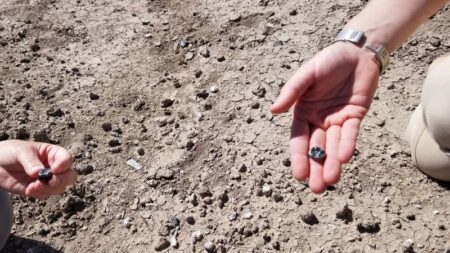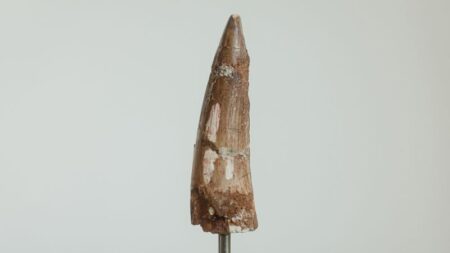In the remote reaches of northern Quebec, a rugged outcrop situated on the eastern banks of Hudson Bay beckons both curiosity and intrigue. This serene yet isolated landmark, known as the Nuvvuagittuq Greenstone Belt, has transformed into a heated focal point in geological research over the last twenty years. Scientists are engaged in a fierce debate, striving to identify what may be regarded as Earth’s oldest rock. With historical significance surpassing four billion years, this site is of immense importance in the story of our planet’s formation.
Recent investigations have yielded findings suggesting that the Nuvvuagittuq Greenstone Belt harbors some of the planet’s oldest known fragments of its crust, tracing back to approximately 4.16 billion years. This rock formation, distinguished as a remnant of the Hadean Eon—an era beginning around 4.6 billion years ago when our planet was still tumultuous and inhospitable—offers a rare glimpse into the early geological history of Earth. Geologist Jonathan O’Neil, a lead researcher involved in the study, emphasized the significance of such findings, likening rocks to ancient books wherein each formation holds valuable insights into Earth’s evolutionary narrative.
The complexity surrounding the dating of the Nuvvuagittuq Greenstone Belt is noteworthy. Numerous research teams have attempted to ascertain the age of this rock with results that have varied tremendously. While consensus generally acknowledges that the formation is at least 3.75 billion years old, there remains contention regarding whether it deserves the title of Earth’s oldest geological formation. Elsewhere in Canada, for instance, the Acasta Gneiss Complex is firmly recognized to possess an unambiguous age of 4.03 billion years, effectively setting the boundary between the Hadean and Archean Eons.
O’Neil’s previous research sparked controversy when he posited that the Nuvvuagittuq Greenstone Belt was 4.3 billion years old. This bold claim was met with skepticism due to concerns over dating techniques and data interpretation. Now, with the publication of new findings, O’Neil is determined to address these critiques. He utilizes radiometric dating methods, which measure the natural radioactive decay of certain elements within the rocks as a chronological “clock.” By employing an hourglass analogy, he describes how counting radioactive particles at different stages allows for determining ages.
However, the absence of zircon, a mineral commonly employed in radiometric dating due to its ability to incorporate uranium and withstand geological transformations, presents a unique challenge for dating the rocks within the Nuvvuagittuq Greenstone Belt. O’Neil remarks that the scarcity of zircon minerals was a significant factor limiting previous studies; his more recent focus has shifted to rare earth elements, specifically samarium, which decays into neodymium—a technique previously harnessed to date ancient meteorites.
Critics within the geological community have raised points of contention regarding the methods employed in this latest study. Some scientists remain skeptical that the chosen datings techniques accurately reflect the geological history of the rocks, citing potential alterations due to geological changes over billions of years. Discussions have arisen about the use of whole-rock samples for analysis, which may inadvertently introduce errors if any individual mineral component has undergone metamorphosis.
The findings from this research not only illustrate the ongoing debate within the scientific community regarding Earth’s ancient past but also shine a light on the broader implications of such discoveries. For instance, some researchers speculate that the exceptional age of these rocks may pose insights into the origins of life on Earth, suggesting that if life began shortly after the planet’s formation, then the likelihood of life throughout the universe is intriguingly increased.
Geochemists and geological researchers alike are divided on the proposed age of the Nuvvuagittuq Greenstone Belt. While some express greater confidence in O’Neil’s latest findings, others advocate for a more cautious approach, emphasizing the need for further analysis and validation of the data. As debates persist, the geological community continues to seek an answer to one of the most profound mysteries—what is the true age of Earth’s oldest rocks? Each new finding contributes to an ever-evolving narrative, and as methodologies advance, they hold the potential to redefine our understanding of Earth’s formative eons.












